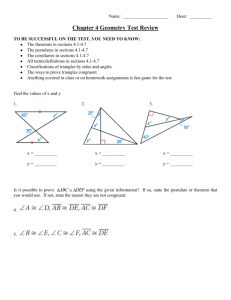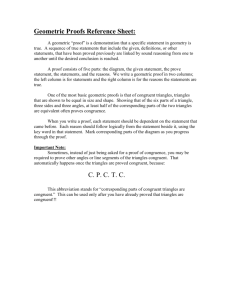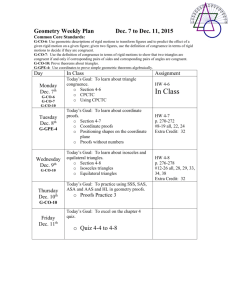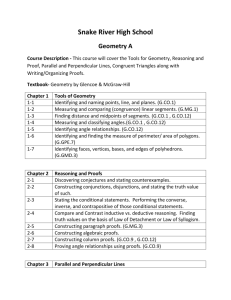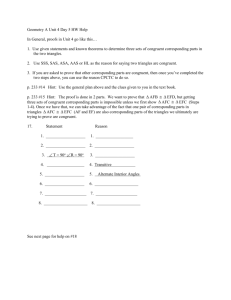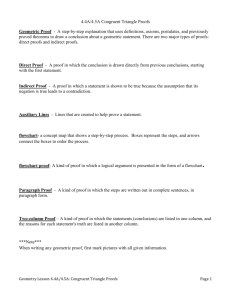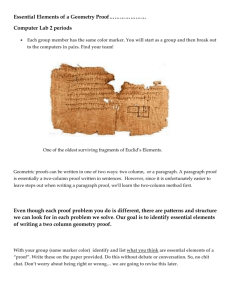Geometry-18 Nov 2011- CPCTC, proof - Shope-Math
advertisement
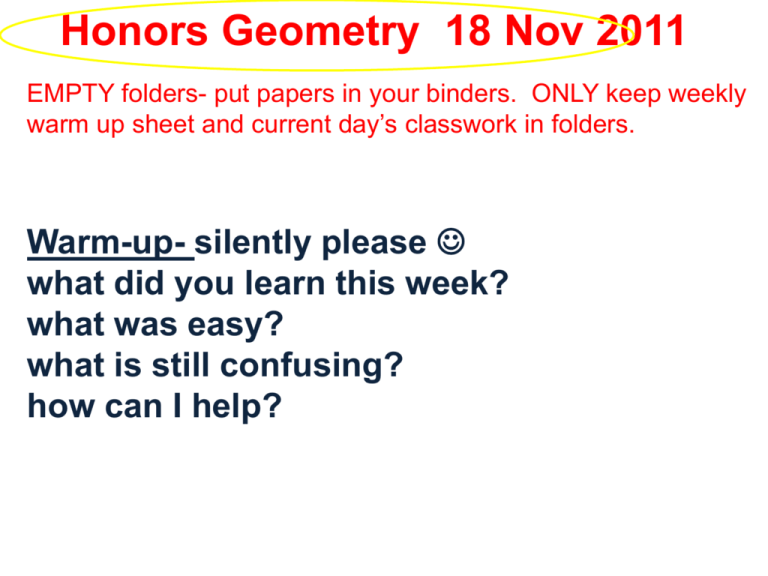
Honors Geometry 18 Nov 2011 EMPTY folders- put papers in your binders. ONLY keep weekly warm up sheet and current day’s classwork in folders. Warm-up- silently please what did you learn this week? what was easy? what is still confusing? how can I help? Objective Students will write flow chart proofs. Students will take notes, participate in class discussion, do proofs and present to the class. Homework due today pg. : 21, 22, 23 Homework due Tuesday, Nov. 22 pg. 239: 1- 4, 10 - 13 If two triangles are back to back – they share a common SIDE “same side” A B AB CD C If two triangles meet at a vertex– vertical angles are congruent D If two triangles meet at a vertex– and the sides are parallel – look for alternate interior angles 750 a a a CPCTC… If two triangles are congruent, then Corresponding Parts of those Congruent Triangles are Congruent CPCTC You must make sure you have CORRESPONDING PARTS SAME RELATIVE POSITION!!! HINTS– Use colored pencils to mark corresponding parts. Mark all info you know on the figure. Redraw triangles separately. Extend lines or draw additional lines to make triangles. Use ARROWS. A proof is a written account of the complete thought process that is used to reach a conclusion. Each step of the process is supported by a theorem, postulate or definition verifying why the step is possible. In formal Euclidean proofs, no steps can be left out. WHY???? “A proof is an argument, a justification, a reason that something is true. It’s got to be a particular kind of reasoning – logical – to be called a proof….A proof is just the answer to the question “Why?”, when the person asking the question wants an argument that is indisputable… “ retrieved Nov. 17, 2011 from http://www.math.sc.edu/~cooper/proofs.pdf Proofs– HOW? See page 237- 238 See example A- paragraph proof flowchart proof You can also do two column proofs. 1. Restate given information clearly. Mark the information on a sketch. 2. State what you are trying to show. 3. Write the given information on the left. Write what you are trying to show on the right. 4. Fill in the other boxes working backwards and forwards as needed. ASK: what do I need to know in order to claim the conclusion is true? what must I show to prove the intermediate result? a practice Do problems on handout 4.7 Be ready to share your work with the class. debrief what did you learn? what is still confusing?
